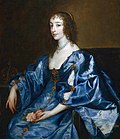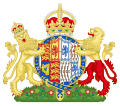
British queen mothers are queen dowagers who have been the mother of the reigning sovereign of England, Scotland or the United Kingdom. The term queen mother has been used in the English language since at least 1560. [1] [2] British queen mothers assume the style of "Her Majesty Queen [first name]" upon their husband's death. Moreover, a queen mother is not necessarily the mother of a queen regnant; the title applies regardless of the current monarch's gender.

















